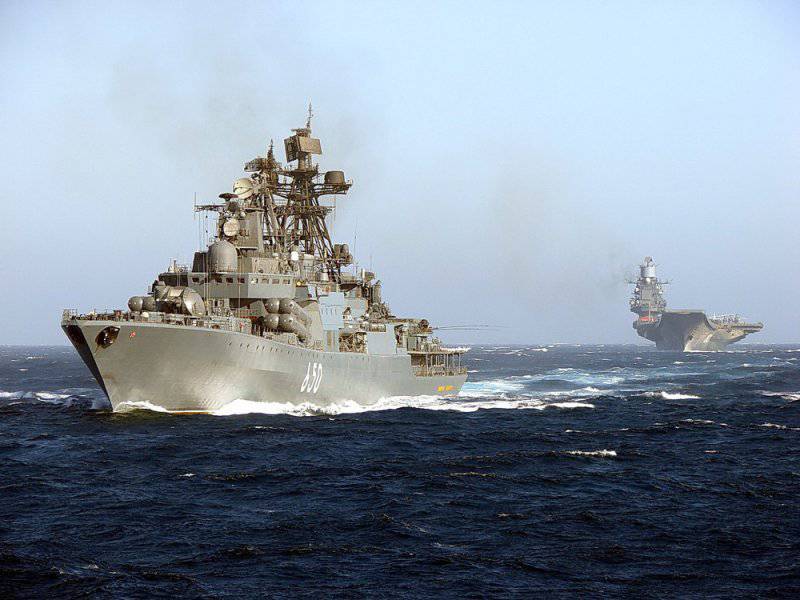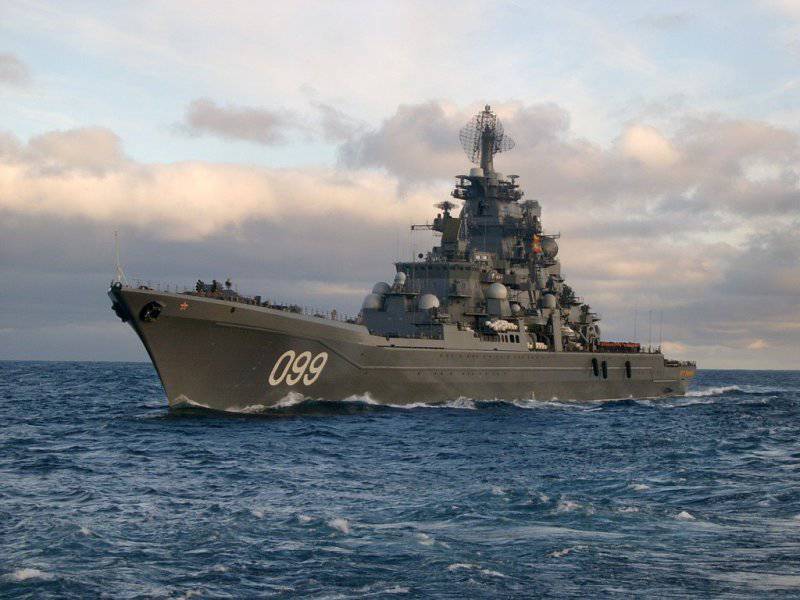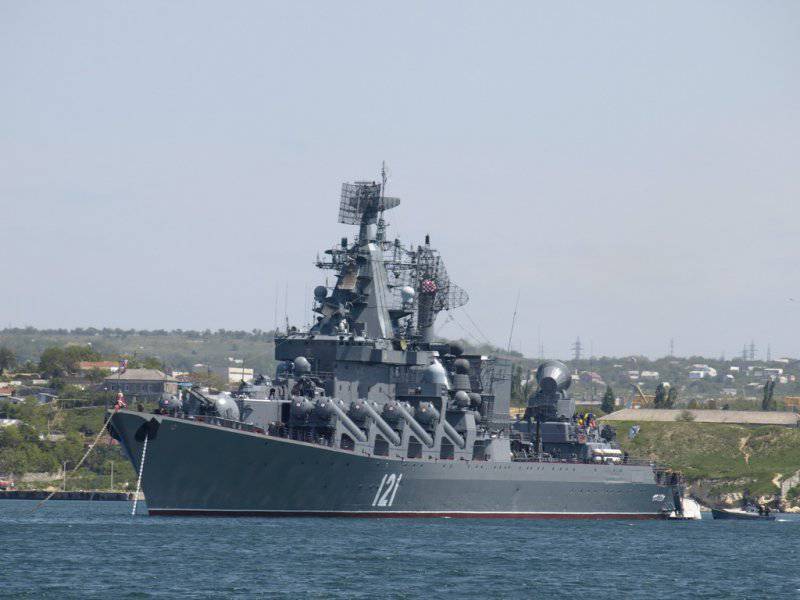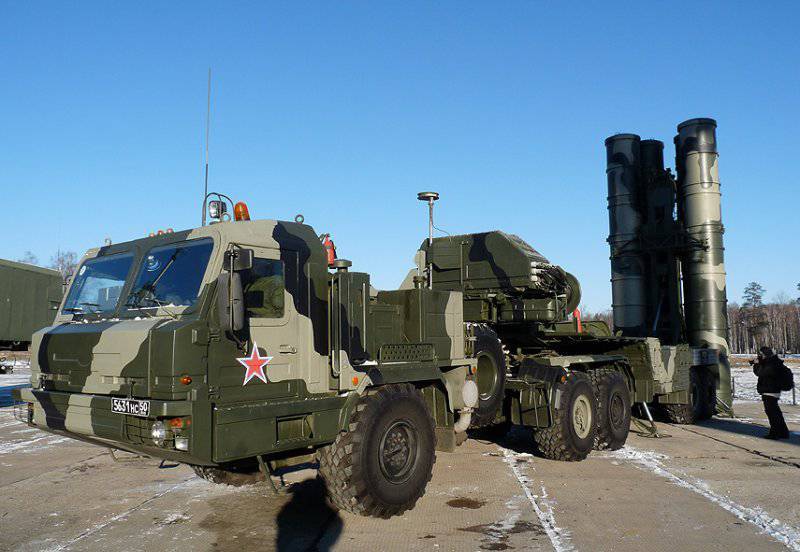Navy: current status and development prospects
The end of the 20th century marked the end of an entire epoch, the collapse of the country laid a heavy burden on the shoulders of the people, reflected in all spheres of society from agriculture and utilities to engineering and science.
As for the armed forces, the collapse of the system and the ensuing collapse of industry brought the army to the brink of survival. But the most, in my opinion, the Navy received a heavy blow, because without proper funding fleet the ships were forced to rust at the berths, the lack of spare parts and fuel and lubricants affected the combat readiness, the installation of the ship for repair actually meant its withdrawal from the fleet, and the planned modernization was delayed for decades. Over the years, the fleet lost dozens of ships, many of which were eventually put on needles. Over the past two decades, Russia has actually lost its position not only in the oceans, but also off its shores. An example is the Black Sea basin or the Far Eastern region, where our neighbors during this time have significantly changed the balance of power in their favor.
Recently, a lot of information about laying new ships appears in the open press, but they mainly represent small displacement vessels (patrol ships, rocket boats, corvettes), whose main function is to control coastal waters. To argue about whether these ships are necessary for the fleet is meaningless, because the answer is possible only one “unequivocally YES”, but today it will be a matter of warships capable of solving a wide range of tasks. Currently, the Russian Navy has about a half dozen surface warships capable of solving tasks outside the 200-mile economic zone. The composition of the domestic surface fleet is as follows:
Northern Fleet:
1 The 1143.5 heavy aircraft-carrying cruiser of the type “Admiral of the Fleet of the Soviet Union Kuznetsov” (commissioned in 1990)
1 Heavy nuclear missile cruiser project 1144.2, type "Orlan" Peter the Great (commissioned in 1998 year)
3 BOD project 1155 and 1155,1: "Vice-Admiral Kulakov" (commissioned in 1981 year), "Severomorsk" (commissioned in 1987 year), "Admiral Chabanenko" (commissioned in 1999 year)
1 Destroyer project 956, type "Sarych" "Admiral Ushakov" (commissioned in 1993 year)
Total 6 Warships
Black Sea Fleet
1 Missile cruiser project 1164 "Moscow" (commissioned in 1982 year);
1 BOD project 1134-B "Kerch" (commissioned in 1974 year).
Total 2 warships.
The Baltic Fleet
1 Destroyer project 956 "Sarych" "Persistent" (commissioned in 1992 year)
Total 1 Warship
Pacific Fleet
1 Missile cruiser project 1164 "Varyag" (commissioned in 1989 year);
3 Destroyer of the 956 project, “Sarych” type: “Fast” (commissioned in 1989 year), “Bezobaznenny” (commissioned in 1990 year), “Admiral Tributs” (commissioned in 1986 year);
3 BOD of the 1155 project: “Marshal Shaposhnikov” (commissioned in 1986 year), Admiral Vinogradov (commissioned in 1988 year), Admiral Panteleev (commissioned in 1992 year)
Total 7 Warships
In total, the Russian Navy currently has only 16 surface warships (excluding ships of the coastal zone, auxiliary and landing craft), whose average service life exceeds two decades.
If in the first two fleets (Black Sea and Baltic), due to the geographical features of the water area, most of the tasks can be entrusted to “small ships” (rocket boats, small artillery ships, corvettes), for the Northern and Pacific fleets, able to solve a much larger range of tasks, including in the vast world ocean. The main purpose of these fleets is to cover the patrol areas of our SSBNs and protect the territory from the threat of attack by “likely friends” using nuclear weapons and cruise missiles. Since the main sources of threat are AUGs and submarines capable of striking targets, being thousands of kilometers away from it, solving the task of protecting the country at distant frontiers using ships whose autonomy is significantly limited (10-15 days) is hardly realizable. . To solve such problems, in my opinion, we need Ship-based Shock Groups, consisting of vessels capable of comprehensively solving the tasks of air defense, anti-submarine defense, EW, and have significant impact potential.
The other day in the media there was information about the start of the project for the deep modernization of the TARK project "Orlan" "Admiral Nakhimov", and also announced plans for a truncated modernization of the two remaining nuclear cruisers of the same project of the same project, which were preserved from the middle of 90's and planned for withdrawal from the Navy.
Information: The 1144 “Orlan” cruiser is a series of four highly autonomous heavy nuclear missile cruisers built at the Baltic Plant in the USSR from 1973 to 1989, the only surface ships in the Russian Navy with a nuclear power plant.
According to the NATO classification, the project is designated as English. Kirov-class battlecruiser.
The chief designer of the project was V. Ye. Yukhnin. As of 2012, only one of the four built cruisers, the TARKR Peter the Great, is in service.
Armament after modernization:
The main acquisition will be UKS - the latest universal ship shooting complexes. It will be possible to install Onyx or Caliber missiles in these launch containers, which will become the main weapons. In addition, the air defense will be enhanced: C-400 and new melee air defense systems.
In total, taking into account anti-aircraft missiles, the cruiser will carry more than 300 missiles of various types.
Representatives of this project:
Heavy nuclear missile cruiser "Kirov" ("Admiral Ushakov")
Launched: December 30 1980 of the year
Northern Fleet of the Russian Navy
Current status: With 1990 in reserve. In the sediment with 1991 year.
Heavy nuclear-powered missile cruiser Frunze (Admiral Lazarev)
Launched: October 31 1984 of the year
Pacific Fleet of the Russian Navy
Current status: Seduced from 1999 year.
Heavy nuclear missile cruiser "Kalinin" ("Admiral Nakhimov")
Launched: December 30 1988 of the year
Northern Fleet of the Russian Navy
Current Status: In repair and upgrade with 1999. In fact, the upgrade began at the end of the year 2012, the end of the upgrade year 2018
Heavy nuclear missile cruiser "Yuri Andropov" ("Peter the Great")
Launched: March 1998
Northern Fleet of the Russian Navy
Current state: In service.
There is also information on the commencement and modernization of the Marshal Ustinov RK of the Atlant project, which is to be incorporated into the Pacific Fleet. Additionally, plans were made to acquire the Ukraine (former Admiral of the Navy Lobov) of the same project from Ukraine to the Republic of Kazakhstan.
Information: The 1164 cruiser of the code “Atlant” (NATO code - the English Slava class) is a class of Soviet missile cruisers that is intermediate between ships of the “Ushakov” type (former 1144 “Orlan”, formerly “Kirov”) and destroyers of the “Modern” type (project 956). Atlant-type missile cruisers with powerful surface-to-surface missile weapons became an important part of the Russian Navy after the division of the USSR fleet.
In total, 4 cruisers of this type were built, and 3 was put into operation.
Armament:
• Anti-ship - 16 launchers of the Vulkan complex (ammunition load of 16 anti-ship missiles P-1000), a missile weighing up to 6 tons and a flight speed of 3077 km / h with partial armor is equipped with a powerful (500 kg) conventional high-explosive-cumulative or nuclear (350 kt) warhead and is capable of hitting designated targets at ranges up to 700 km. The flight of anti-ship missiles to the target is carried out along a complex trajectory. It is equipped with a telecontrol system and an onboard electronic countermeasures station for the attacked ship's air defense systems. The length of the rocket is 11,7 m, the wingspan is 2,6 m, the diameter of the rocket is 0,88 m.
• Anti-submarine - two torpedo tubes (10 torpedoes for combating enemy submarines) caliber 533 mm, length 7 m, weight 2 tons, explosive charge 400 kg, range up to 22 km, speed up to 55 knots (100 km/h).
• Two RBU-6000 rocket launchers (ammunition load of 96 rocket-propelled depth charges, bomb weight 110 kg, warhead weight 25 kg, length 1,8 m, caliber 212 mm) rocket depth charges are designed mainly to protect the ship from torpedoes and submarines, by conducting single or salvo fire, firing range 6 km, immersion depth 500 m.
• Ship-based anti-submarine helicopter Ka-25/Ka-27 with a hangar and a helipad.
• Two-gun naval artillery mount - 130 mm AK-130 (600 rounds of ammunition) is designed to fire at sea, air and coastal targets at a distance of up to 24 km, with a rate of fire of 90 rounds / min. The mass of the installation reaches 98 tons, the mass of the projectile is 86 kg, the initial velocity of the projectile is 850 m/s. The AK-130 ammunition load includes unitary cartridges with a high-explosive fragmentation projectile, equipped with three types of fuses.
• Six ZAK - AK-630 (ammunition load of 16000 rounds of 2000 rounds in a tape) are designed to destroy air targets, anti-ship missiles, small ships, floating mines and lightly armored ground targets. The initial speed of a projectile with a diameter of 30 mm, weighing 0,834 kg reaches 900 m / s, the rate of fire is 6000 rds / min, the range is up to 8 km.
• Two installations of the Osa-MA air defense system (48 missiles, missile weight 128 kg) of short range are designed for self-defense of the ship from attacks by aircraft, helicopters and anti-ship missiles, as well as firing at surface targets. The combat capabilities of the air defense system make it possible to destroy air targets at a speed of up to 600 m / s at a distance of up to 15 km and an altitude of up to 5 km, the length of the missile is 3 m, and the weight is 128 kg.
• Eight S-300F "Fort" air defense systems (ammunition load of 64 missiles in 8 revolver-type launchers below deck, length - 7,9 m, diameter - 0,34 m, weight - 1600 kg) is designed to protect orders of ships from attacks by aircraft, cruise missiles and other means of enemy air attack, speed up to 2000 m / s, range up to 90 km and up to 25 km in height.
In my opinion, the ships of these projects, which have onboard weapons in the form of Caliber and Vulcan missile systems, as well as analogues of sea-based 400 S-AIR systems, are excellent for solving assigned tasks and can serve as the basis for the formation of shipboard attack groups.
In my opinion, the ships of these projects, which have onboard weapons in the form of Caliber and Vulcan missile systems, as well as analogues of sea-based 400 S-AIR systems, are excellent for solving assigned tasks and can serve as the basis for the formation of shipboard attack groups.
Information: Triumph (S-400, originally S-300PM3, air defense index - 40P6, according to the classification of the US and NATO Defense Forces - SA-21 Growler, literally “Grumbler”) - Russian anti-aircraft missile system of long and medium range, anti-aircraft missile system (SAM) a new generation. Designed to defeat all modern and promising aerospace attacks - reconnaissance aircraft, strategic and tactical aircraft aviation, tactical, operational-tactical ballistic missiles, medium-range ballistic missiles, hypersonic targets, jammers, airborne radar and guidance aircraft, and others. Each air defense system provides simultaneous firing of up to 36 targets with guidance of up to 72 missiles
The main characteristics of "Triumph"
Maximum speed of hit targets, km/s 4,8
Target detection range, km 600
The range of destruction of the aerodynamic target, km
• maximum 400
• minimum 2
Target height, km
• maximum 30
• minimum 0,005
Tactical ballistic target destruction range, km
• maximum 60
• minimum 7
The number of simultaneously fired targets (the full composition of the SAM) 36
The number of simultaneously guided missiles (full complement of air defense systems) 72
6-7 Shock Ship Groups, equipped with these vessels, accompanied by destroyers, are able to block the main shock-hazard directions in the future.
The main problem in the formation of such compounds is the almost complete absence in the Russian Navy of modern multi-purpose destroyers. At the present stage, ships of such classes, which actually have to be equipped with such Shock Groups, require first of all universality, the ability to solve a wide range of tasks, such as air defense, anti-submarine defense, EW, to have good impact potential. The destroyers (956 “Modern” project) and BOD (1155 project) that were part of the Navy began to be used more than 30 years ago and are no longer able to solve the whole range of tasks assigned to them, especially that their quantitative composition leaves much to be desired (most of the ships need major repairs or are in reserve), this is well understood by the naval leadership, which plans to modernize the ships of these projects before 2020:
EM plans to carry out repairs and upgrades, as well as reconstruct the power plant.
BOD is planned to be equipped with modern A-192 cannons, Caliber missiles and the latest air defense and missile defense system with C-400 Redut missiles.
For the introduction of modern weapons systems will have to change and ship control system, that is, almost all the electronics.
Thanks to this alteration, the BOD will actually become destroyers and will be able to destroy not only submarines, but also surface ships, airplanes, missiles and ground targets. That is, they will become universal warships.
But to carry out repairs and upgrades to infinity is impossible, no one has canceled such concepts as "metal fatigue" and "physical wear and tear." Based on the above, it is time to think about the development of the project Destroyer, which could fully combine the best domestic development and ship school, as well as incorporate foreign experience. But this project should not only be implemented on paper, but also should actually start up in a series, since it will not be possible to solve all the problems that have accumulated in the fleet in single pieces.
Summing up, I would like to look to the future with hope, since not all is lost for our fleet and the country as a whole, and the panic moods that reigned in the society some 5-10 years ago gradually fade away, because implementation of the tasks set and daily coordinated work, we are able to solve many problems, and in the next decade Russia will be able to firmly stand up and recover lost positions in the world's oceans.




Information